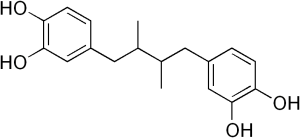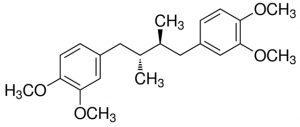Five years after my most-read article about a product that promised to reduce hair growth, I thought it was time for an update.
In 2013, I wrote an in-depth article about Inhibitif, a line of products introduced in Canada that year that promised to reduce hair growth. That one article attracted an unexpected amount of attention. I received numerous comments and emails about it, it was cited on a number of other beauty websites (without my knowledge!), and I continued to receive questions from people about it for years afterwards, even after I took down my old website. Messages have come from readers all over the world, a testament to the internet age that we live in. Some time in the last few years, Inhibitif’s parent company, Deciem, reformulated the product to remove lauryl isoquinolinium bromide and replace it with other active ingredients. Considering the amount of interest there seems to be in this topic, I thought it was worth revisiting.
At the moment, there are five different products in the Inhibitif brand: Body Serum, Face Serum, Intimate Care, Body Hydrator, and Deodorant. All five contain dihydromyricetin as the main active ingredient. Dihydromyricetin is a type of flavanoid produced by a number of different plant species, including the Ampelopsis family (hence its other name, ampelopsin).

Dihydromyricetin was included in the original formulations of Inhibitif. Back in 2013, I had searched specifically for research articles on whether dihydromyricetin had any effect on hair growth but found nothing. In hindsight, I suspect that dihydromyricetin is used as the active ingredient, because over the past several years, some research groups have been studying dihydromyricetin as a potential anti-cancer drug. In in vitro tests on cancer cell lines, there is some evidence that dihydromyricetin can induce apoptosis. (Apoptosis is programmed cell death, which usually occurs when a cell has accumulated enough damage to warrant being shut down. In one model of cancer development, cancerous cells have mutated and lost the ability to undergo apoptosis, and can therefore continue to replicate unchecked. Thus, induction of apoptosis is a key indicator that scientists look for when trying to identify new chemotherapy drugs.) Therefore, it is possible that dihydromyricetin is triggering apoptosis in hair follicles that are in the growth phase, when cells in the follicle are actively dividing, thus inhibiting hair growth.
Besides dihydromyricetin, the Inhibitif Body Serum, Face Serum and Intimate Care contain a secondary active ingredient, an extract of Larrea divaricata, a plant native to South America commonly known as chapparal. It was used as a traditional remedy in South America as an abortifacient. A search of the literature located several references that discuss the use of L. divaricata as a source of actives that may have potential use as anti-cancer drugs, as there is some evidence that the plant extract can induce apoptosis in cancer cell lines in vitro.
A major component of L. divaricata extract is nordihydroguaiaretic acid, a type of lignan. Nordihydroguaiaretic acid and its analogs are of interest as they are “potentially useful in treating diseases related to cancers, diabetes, viral, bacterial infections, and inflammation” (ref. 4). Nordihydroguaiaretic acid was originally used as a food preservative in the 1950s but its use was banned following evidence of toxicity; chronic exposure is toxic to the liver and kidneys. A synthetic analog of nordihydroguaiaretic acid, terameprocol, is in Phase 1 clinical trials for treating high-grade glioma cancers. The only difference between terameprocol and nordihydroguairetic acid is that all the alcohol (-OH) hydrogens have been replaced by methyl (-CH3) groups; in biochemical terms, it would be expected that both chemicals would have similar effects on the human body.


The Inhibitif Body Hydrator contains chelidonine as its secondary active ingredient. Chelidonine is obtained from plants of the Papaveraceae family, in particular, Chelidonium majus. Like dihydromyricetin and L. divaricata extract (which comprises nordihydroguaiaretic acid), chelidonine is being studied as a potential anti-cancer drug, as there is evidence that it interferes with cell division and is capable of triggering apoptosis.

Inhibitif is only one example of a cosmetic that is meant to reduce hair growth. As mentioned in my 2013 article, there is also Dermadoctor Gorilla Warfare, which contains all three active ingredients discussed above. In a recent quick search, I found a brand called Completely Bare whose hair reducing products (includes “Don’t Grow There”, “Go Fuzz Free” and a deodorant) contain L. divaricata extract, along with Boerhaavia diffusa root extract and Narcissus tazetta bulb extract. I did not research these two plant extracts extensively, but it appears both are being investigated for their medicinal properties. For both B. diffusa and N. tazetta, there is at least one research article that discloses a possible apoptotic effect when tested on a cancer cell line in vitro.
Based on the research thus far for dihydromyricetin, Larrea divaricata extract and chelidonine, there is accumulating evidence that these ingredients can affect cell replication and division, and may be capable of triggering apoptosis. These are cellular processes that are finely balanced and not something to be interfered with, at least not without a good reason. The “anti-cancer” description makes these ingredients sound wonderful and effective, perhaps because most people find the word “cancer” to be frightening and something to be avoided at all costs. More worryingly, perhaps the phrase “anti-cancer” leads people to believe that these ingredients can actually prevent cancer and are therefore beneficial! On top of that, there is the insidious notion that these ingredients are innocuous, because all three are obtained from plants and thus are “natural”. However, most “anti-cancer” drugs used for chemotherapy are, by definition, cytotoxic, i.e. they kill any cell that is actively dividing, which includes both cancer cells and hair follicle cells that are in the growth phase. This is why hair loss is a common side effect of chemotherapy. It is also why chemotherapy drugs typically cause many other serious side effects, because these drugs affect all cells in the body that are actively dividing. An ingredient that may affect cell division is not something to be taken lightly (in this case, for cosmetic reasons) and certainly not as a prophylactic against cancer. Any topically applied active ingredient that is reaching the hair follicle is also likely reaching the bloodstream, because both hair follicles and blood vessels are located in the dermis. If these chemicals are penetrating the epidermis and reaching the follicles in the dermis, they are likely also reaching the blood vessels and being circulated to the rest of the body, with unknown effects.
Selected references:
Dihydromyricetin (ampelopsin)
1. Zuo, Y. et al. “Dihydromyricetin induces apoptosis in a human choriocarcinoma cell line.” Oncol Lett. 2018 Oct;16(4):4229-4234. doi: 10.3892/ol.2018.9220. Epub 2018 Jul 26.
2. Xu, Y. et al. “Dihydromyricetin induces apoptosis and reverses drug resistance in ovarian cancer cells by p53 mediated downregulation of survivin.” Sci Rep. 2017 Apr 24;7:46060. doi: 10.1038/srep46060.
3. Ji, F. J. “Dihydromyricetin induces cell apoptosis via a p53-related pathway in AGS human gastric cancer cells.” Genet Mol Res. 2015 Dec 2;14(4):15564-71. doi: 10.4238/2015.December.1.7.
Larrea divaricata; Nordihydroguaiaretic acid; Terameprocol
4. Chen, Q. et al. “Nordihydroguaiaretic acid analogues: their chemical synthesis and biological actives.” Curr Top Med Chem. 2009;9(17):1636-59. Review.
5. Martino, R. et al. “A fraction rich in phenyl propanoids from L. divaricata aqueous extract is capable of inducing apoptosis, in relation to H2O2 modulation, on a murine lymphoma cell line.” Leuk Res. 2013 Sep;37(9):1137-43. doi: 10.1016/j.leukres.2013.06.004. Epub 2013 Jun 26.
6. Grossman, S. A. et al. “Phase 1 study of terameprocol in patients with recurrent high-grade glioma.” Neuro Oncol. 2012 Apr;14(4):511-7. doi: 10.1093/neuonc/nor230. Epub 2012 Feb 8.
Chelidonine
7. Capistrano, I. R. et al. “In vitro and in vivo investigations on the antitumour activity of Chelidonium majus.” Phytomedicine. 2015 Dec 15;22(14):1279-87. doi: 10.1016/j.phymed.2015.10.013. Epub 2015 Nov 10.
8. Qu, Z. et al. “Chelidonine induces mitotic slippage and apoptotic-like death in SGC-7901 human gastric carcinoma cells”. Mol Med Rep. 2016 Feb;13(2):1336-44. doi: 10.3892/mmr.2015.4683. Epub 2015 Dec 14.
9. Kazemi, N. “Telomere shortening in breast cancer cells (MCF7) under treatment with low doses of the benzoisoquinoline alkaloid chelidonine”. PLoS One. 2018 Oct 3;13(10):e0204901. doi: 10.1371/journal.pone.0204901. eCollection 2018.
Boerhaavia diffusa, Narcissus tazetta
10. Manu, K.A. “Punarnavine induces apoptosis in B16F-10 melanoma cells by inhibiting NF-kappaB signaling.” Asian Pac J Cancer Prev. 2009;10(6):1031-7. [Note: punarnavine is a quinolone alkaloid found in Boerhaavia diffusa.]
11.Liu, J. et al. “Apoptosis of HL-60 cells induced by extracts from Narcissus tazetta var. chinensis.” Cancer Lett. 2006 Oct 8;242(1):133-40. Epub 2006 Jan 19.